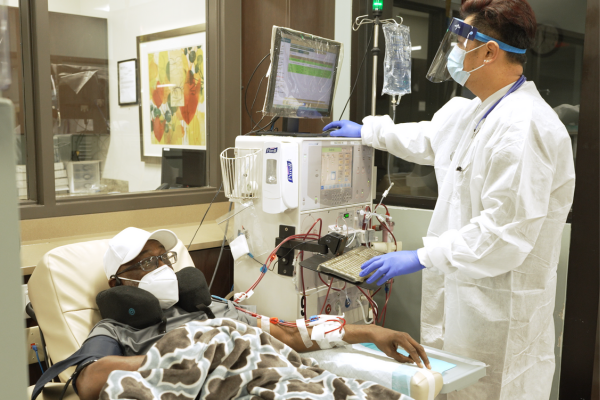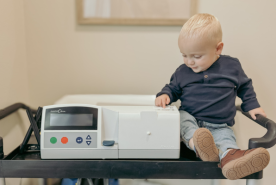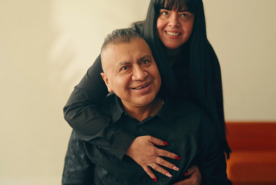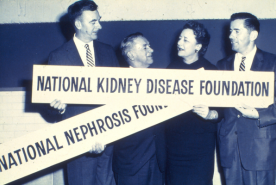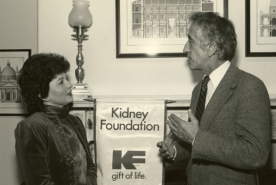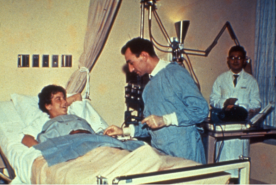August 24, 2023
Continuing education series for professionals.
Kidney transplants are the optimal treatment option for many kidney patients. However, the average wait time for a kidney is 3-5 years, and in some areas, much longer. Unfortunately, not all patients can afford to wait that long. As a healthcare professional, you can play a vital role in helping patients find a transplant sooner by educating them about living kidney donations.
Types of living kidney donations
There are two types of living kidney donors–directed and non-directed.
"A direct donor gives to a specific person they pick. If they cannot donate to the person they desire, they can still do so through a paired kidney exchange. During a paired exchange, each donor has a recipient that doesn't match them, so they swap," said Dr. Alexandra Gmurczyk, a nephrologist. "A Non-directed donor is an altruistic donor."
If a donor is prepared to donate now but their recipient isn't ready, they can give their kidney to someone else and receive a voucher for their intended recipient.
"You can donate to someone you don't know and receive a voucher for the person you do," said Dr. Gmyrchzyk. "This voucher ensures that the recipient will get a transplant when they are ready."
People interested in becoming voucher donors can participate through a National Kidney Registry partnering transplant center. They may also qualify for reimbursement of lost wages and travel expenses associated with their donation.
Share the National Kidney Registry.
The donor evaluation process
The donor evaluation process, although time-consuming, is designed to safeguard the donor's well-being.
"The evaluation process is tailored to the donor's pace. They can proceed as quickly or slowly as necessary to ensure their medical and psychosocial suitability for donation and their comprehensive understanding of the risks and benefits involved," said Annie Doyle, a registered nurse, and living donor coordinator. "We want donors who are well-informed about the benefits and risks."
Some risks of donating a kidney include the following:
- Pain
- Infection
- Pneumonia
- Kidney damage
- Blood clotting
The benefits of living kidney donation include faster kidney function compared to a deceased donor and the flexibility to schedule the transplant surgery at a convenient time and location for both the donor and recipient.
"Most centers start with an intake process like an online survey or a call with a healthcare professional to review their medical history. Then they meet with an ID or independent living donor advocate who protects the donor's rights throughout the process, independent from the transplant team," said Doyle. "It may vary from center to center, but there's usually another screening process with a transplant coordinator and basic testing."
The basic testing includes:
- Height
- Weight
- Blood pressure
- A basic metabolic panel (BMP)
- Blood type
- Tissue typing
"Next comes the in-person evaluation, a one or two-day process, depending on the center. There is blood, urine, and imaging testing including EKG, chest, X-ray, and abdominal CT. They meet with physicians like nephrologists and surgeons, social workers, their donor advocate, and a dietitian. They may also meet with a transplant coordinator, a psychologist, pharmacist, and financial coordinator," said Doyle. "We also review alternatives to living donor transplants."
Other options include deceased donors and helping the recipient find a different living donor.
Afterward, the living donor team meets to review the donor's candidacy as a multidisciplinary committee to decide if they are approved, declined, or require more testing.
Learn more about the living kidney donation process.
Working through the confidentiality process
The healthcare team does not share information regarding the donor's evaluation progress with the recipient until the donor is ready.
"Donors have the option to inform recipients about their progress, but we respect their confidentiality if they choose to keep it private until they are approved and ready to proceed with the next steps," said Doyle.
Maintaining confidentiality ensures that donors do not feel pressured or coerced into donating.
"Donors retain the right to decline at any point, even on the day of surgery. However, such occurrences are rare since donors are well-educated, supported, and continuously monitored throughout the process," said Doyle. "If a donor reaches surgery day and decides they are not ready, the medical team will pause and regroup when the donor feels prepared. If the donor chooses not to proceed, an alternative plan is developed.
The transplant team can also provide support if a donor changes their mind. For example, some donors may hesitate to say "no" due to concerns about upsetting the recipient, their family, or friends. In such cases, the transplant team should assist them in declining gracefully.
Resources to share with your patients
These resources may help your patients and potential donors understand living kidney donation:
- Becoming a Living Donor course
- Finding a Living Donor course
- How to Share Your Story and Find a Living Kidney Donor
- Talking With Someone Who Understands What It Means To Live With a Kidney Transplant
- Programs for Donor/Recipient Pairs with Incompatible Blood Types
Earn CE On the Go
Listen and earn CE as our panelists delve into the subjects that matter most to you while offering in-depth clinical updates and real-world examples of these changes. Subscribe to The Kidney Commute Podcast.
